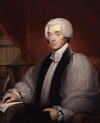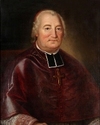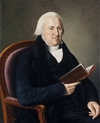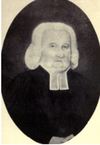Catholic, he earned the confidence of the clergy, and in February 1784 he was one of six men authorized to receive and remit to the parish priest of Quebec money and goods destined for the poor and sick of
parish had had the attention of no clergy whatever. The work awaiting Langhorn was immense and he took it up immediately. Quickly he established a routine to which he adhered with little deviation for the
” as worthy of imitation. Although numerical data are lacking, this movement seems to have been especially significant in areas where Anglicans were unattended by clergy of their own. In general, the
, although on occasion he was unable to conceal his aversion for still-visible signs of the influence of the French régime and for the Roman Catholic clergy; he considered the clergy useful, to be sure
admission to the province constituted an exception, since after the conquest the British government had forbidden the Canadian clergy to recruit priests in France. His compatriot went back to France in 1783
in his region, lacking an adequate supply of clergy, was hard pressed to prevent its members from being led astray by “fanatical Methodists,” “Scotch Calvinists,” and the clergy of the established
considerable opposition from the local clergy. Not only were they unused to hierarchical interference, but they were also angry that they had been denied a voice in the selection of their bishop. Furthermore
secure money for building Anglican churches in the province, he looked only to an English clergy to minister to the colonial outpost.
Hunter’s rather
Montgomery*]. A large part of the Canadian nobility and bourgeoisie, as well as most of the Catholic clergy, came down in favour of defending Canada; however, on the whole the people remained neutral, and
wrote with his return to Canadian soil in mind “to tell [the Catholic clergy] that their religion and rights will suffer if the rebels, and especially the Bostonnais, gained the upper hand
to the government from leased crown and clergy reserve lots. Under an ordinance of 1787 the sheriff became responsible also for summoning grand jurors to hear criminal cases in the Court of King’s
Adhémar* and Jean De Lisle took in London to request constitutional reform, Gravé maintained that the clergy must
the seigneury of Île-d’Anticosti, all of the seigneury of Saint-Armand, Dunham Township (minus the government and clergy reserves), a quarter of Stukely Township, and various other unidentified lots
Milnes*, whom he had to inform of all other appointments. The government was disputing the ownership of the bishop’s palace with him. He lacked priests; discipline and training among the clergy
the conquest Father Louis, like others of his order, turned to the parish ministry. He was prompted by his need for a livelihood and also by goodwill towards the secular clergy, whose numbers diminished
led a licentious life which went absolutely counter to the morality of his time, and he did not hesitate to undermine the Catholic clergy’s influence with the government. His uncontested leadership and
Catholic clergy so as to assimilate the Canadians and convert them to Protestantism; settlement of the Eastern Townships by British people and an artificial increase in the number of ridings for this region
the German Reformed Church, and the bond among them enabled the local clergy to declare themselves an ad hoc presbytery, the first such body in Canada, for the purpose of carrying out the
-Dame, at the same time serving the church of Notre-Dame-des-Victoires. On a couple of occasions, one of them in 1757, he preached at the clergy retreat. On 2 June 1758 the bishop of Quebec
problems of administration and property ownership. In the course of the ensuing decades the congregation almost disintegrated. During this time it was served by laymen, and occasionally by the clergy of the









